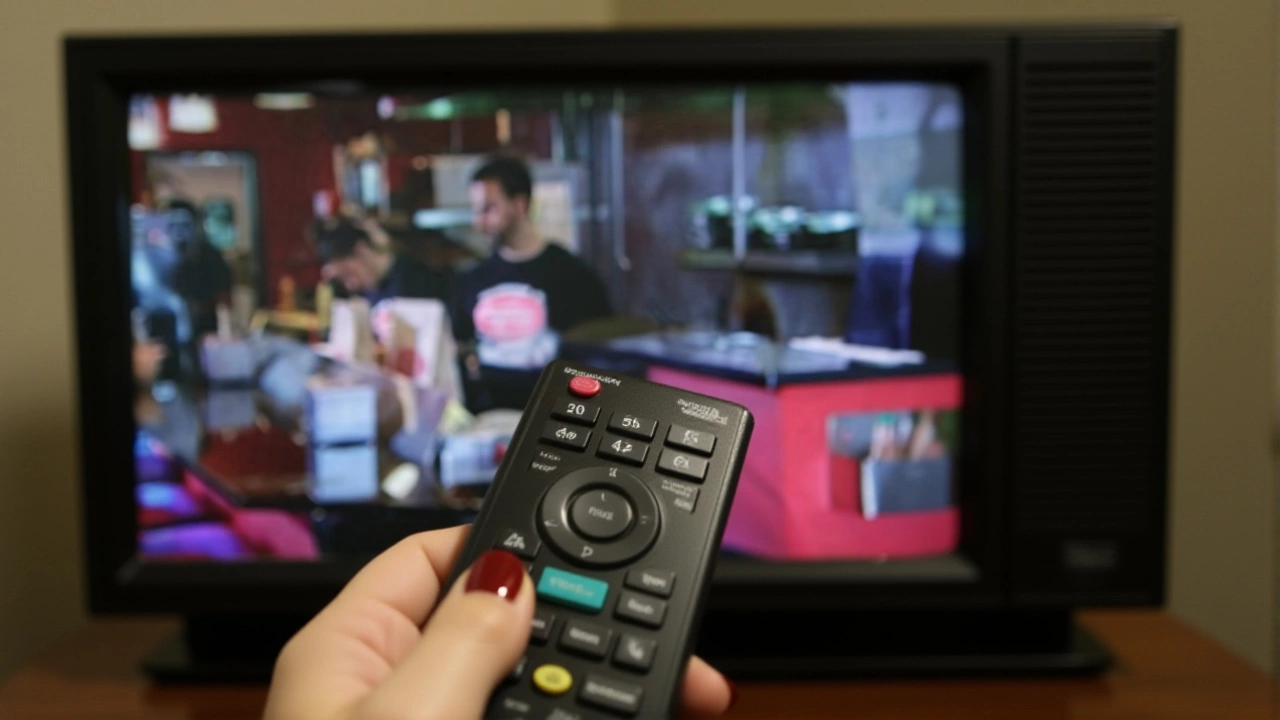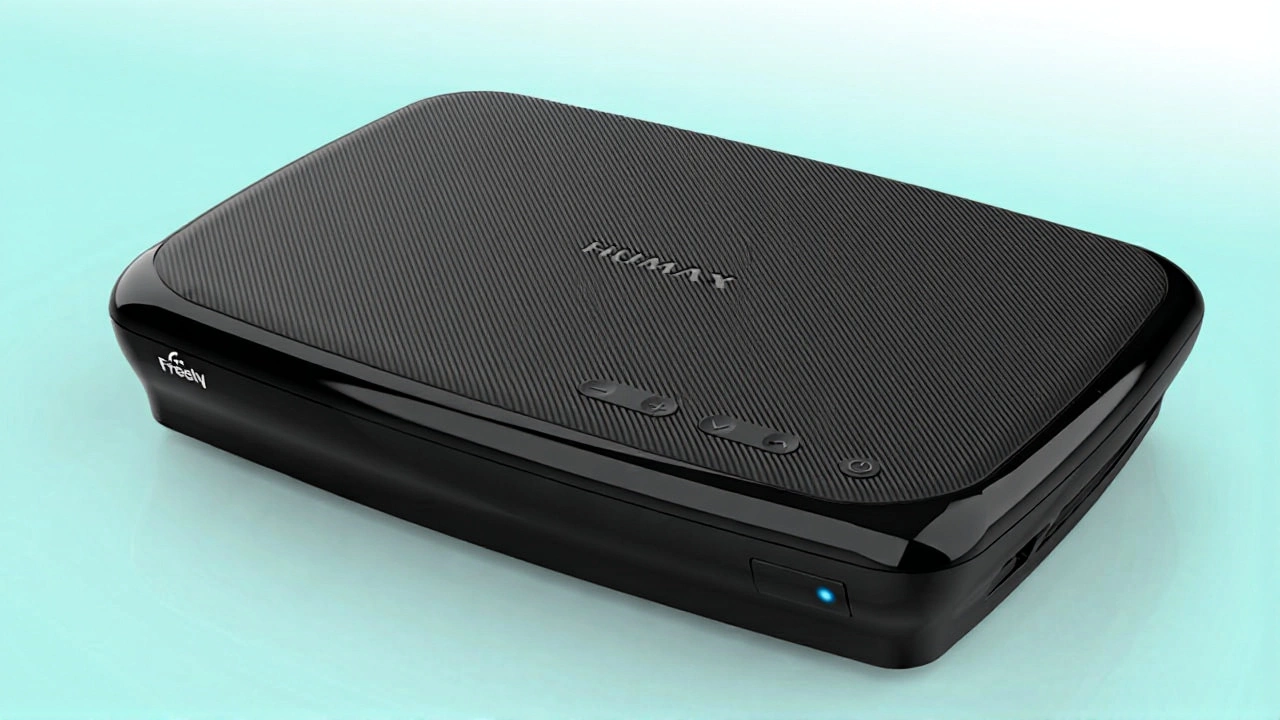When Humax unveiled a leaked Freely streaming box, the UK TV market got a jolt. The device is built to run Freely, a new internet‑based service that streams the same line‑up you’d find on BBC, ITV, Channel 4 and other major UK broadcasters. Tim Davie, director‑general of the BBC, has called the service “the future of television”. Meanwhile, incumbents like Sky and Virgin Media are already scrambling to defend their paid‑package empires. The leak was first reported by T3 on 29 September 2025, and the rollout is expected to hit living‑room TVs across United Kingdom within weeks.
What is Freely and how does it work?
Freely is not a traditional broadcast platform; it delivers TV over broadband, using the same licences that power Freeview and Freesat. In practice, the service aggregates publicly funded channels – BBC One, BBC Two, ITV, Channel 4, Channel 5 – and a handful of commercial add‑ons like the U network, then streams them through a single, unified UI built into compatible televisions.
Because the content travels over the internet, the catch‑up function is baked in. When you select a programme you missed, Freely automatically pulls the appropriate on‑demand clip from the broadcaster’s own archive, sparing you the hassle of opening a separate app. The tech team says the latency is typically under two seconds, comparable to a straight‑to‑air broadcast.
Hardware support and the leaked Humax box
Manufacturers have been quietly adding Freely support to new models. Panasonic, TCL, Sharp, Toshiba, Bush and Hisense already ship TVs with the service pre‑installed. However, you can’t just download an app to an older set – the integration lives at the firmware level, meaning only newer panels get the advantage.The leaked Humwise box (codenamed “Freely‑Box”) is a small, black square about the size of a paperback novel. It plugs into HDMI and draws power from the TV’s USB port. Inside, a custom‑tuned MediaTek chipset runs a lightweight Android‑based OS that boots straight into the Freely home screen. Early screenshots show a clean, tile‑based layout with a “Live TV” tab, a “Catch‑up” tab, and a small “Settings” icon for bandwidth control.
According to sources close to the project, Humax will start shipping the box in October, with an initial batch of 50,000 units aimed at the UK market. The price tag is rumored to be £0 – £20, essentially a “pay‑what‑you‑want” model designed to boost adoption.
Industry reactions – praise and scepticism
BBC leadership has been vocal. In a brief interview, Tim Davie said, “Freely gives us a way to reach households that have moved away from aerials but still want free‑to‑air public service broadcasting. It’s a natural evolution.” He added that the organisation is working closely with the service to ensure that regional news and iPlayer content remain fully accessible.
Rik, T3’s news editor, noted, “The timing is perfect. With Sky’s recent price hikes and Virgin Media’s bandwidth caps, consumers are craving a no‑cost alternative that still feels premium.” He also highlighted that the leak confirms a growing trend of “set‑top‑box‑as‑a‑service” models, where hardware is essentially a gateway to a cloud‑native platform.
Not everyone is convinced. A spokesperson for Sky said, “We welcome competition, but we remain committed to delivering a blended offering of live, on‑demand and exclusive content that Freely simply can’t match.” Virgin Media’s chief technology officer echoed similar concerns, pointing out that the free service has no rights to premium sports or first‑run movies.
Competitive impact – what this means for Sky and Virgin Media
Freely’s biggest weapon is price – it’s free. For a household that only watches the five main broadcasters, the service could replace a basic Sky or Virgin Media package that costs £25‑£30 a month. According to a recent Ofcom survey, roughly 30 % of UK homes currently subscribe only to the free‑to‑air channels via Freeview. If just half of those switch to Freely, the market could see up to 7 million new users.
From a revenue perspective, the shift is likely to pressure pay‑TV providers into offering more flexible, a‑la‑carte options. Analysts at IDC predict that “by early 2026, we could see a 5‑10 % decline in paid satellite subscriptions directly attributable to Freely’s growth.”
However, the impact won’t be instantaneous. Many households still rely on aerials for reliable signal in rural areas where broadband is patchy. Freely, being internet‑dependent, will need robust broadband coverage – something the UK government is still rolling out under the “Broadband for All” scheme, slated for completion in 2026.
Future outlook – will Freely replace Freeview?
Industry veterans argue that Freeview’s legacy isn’t going anywhere overnight. The service still holds the advantage of zero‑latency reception and works without a broadband connection. Yet, Freely’s integrated catch‑up and the lure of a sleek, modern interface have already attracted tech‑savvy viewers.
The next few months will be decisive. If Humax’s box lands on retail shelves as promised, and manufacturers accelerate firmware updates, Freely could achieve a critical mass that forces the traditional broadcast model to adapt. In that scenario, we might see a hybrid future where Freeview remains for over‑the‑air reliability, while Freely becomes the default UI for streaming the same channels.
Key takeaways
- Freely streams the UK’s five public service channels and several commercial add‑ons over broadband.
- Humax’s leaked box is expected to ship in October 2025, priced at £0‑£20.
- Supported TV brands include Panasonic, TCL, Sharp, Toshiba, Bush and Hisense.
- BBC director‑general Tim Davie publicly backed the service as the next step for free TV.
- Analysts forecast a potential 5‑10 % dip in paid satellite subscriptions by 2026.

Frequently Asked Questions
How does Freely differ from Freeview?
Freeview delivers channels via a terrestrial aerial, while Freely streams the same line‑up over broadband. Freely adds built‑in catch‑up, a modern UI and works on compatible smart TVs without a separate set‑top box.
Which TV brands currently support Freely out of the box?
Panasonic, TCL, Sharp, Toshiba, Bush and Hisense have announced models that ship with Freely pre‑installed. Firmware updates are also rolling out to existing models from these manufacturers.
Will I need a broadband subscription to use Freely?
Yes. Freely relies on an internet connection for both live streaming and on‑demand catch‑up. Homes with a stable broadband link of at least 5 Mbps can expect smooth playback.
What does the Humax Freely box cost and when will it be available?
Rumour mills suggest a "pay‑what‑you‑want" model between £0 and £20, aiming for a launch in October 2025. The exact price will be confirmed when Humax opens pre‑orders.
How might Sky and Virgin Media respond to Freely’s launch?
Both providers have hinted at new flexible bundles and cheaper entry‑level plans. Industry analysts expect them to double‑down on exclusive sports and on‑demand libraries to retain subscribers.




